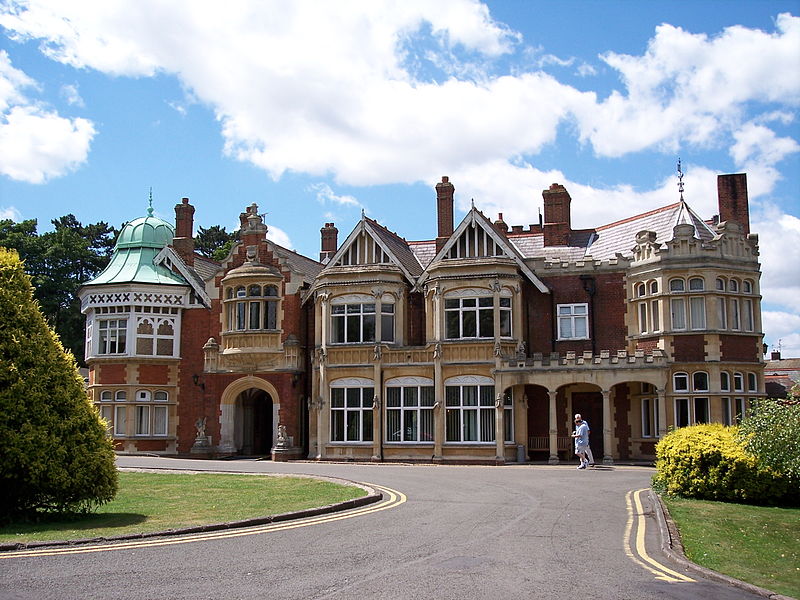Sounds like a good idea to have a WWII group. Over and out, wingco!

Professor David Rees - Cryptoanalyst at Bletchley Park
I reckon we need a Wales WWII Group...what does anyone think?
I did a fibre optic course there when I worked for BT, interesting place, lots of WWII "stuff" on display.

Thanks, SJ.
It worked this time.
This is the fourth time I've tried to reply. Each time, the site tells me that I've typed nothing (indeed I had to retype the entire original discussion as it said there was nothing there!). Sorry I didn't respond before but I only saw your message on my phone and I can't do anything on that. There was a small picture of him in The Times, which I rescued from the bin and I'll post it when I get home at the weekend.
Couldn't find a pic of David Rees anywhere but I did find one of Bletchley park:-
| Description | Bletchley Park, Milton Keynes. |
| Date | 20 July 2005, 12:42 |
| Source | Bletchley Park |
| Author | Draco2008 from UK |
| Camera location |
|
|---|
An obituary appeared in The Times today for Professor David Rees, a brilliant mathematician born in Abergavenny on 29 May, 1918. He died on 16 August, 2013, aged 95. I summarise his achievements here, using the details given in the obituary.
He was the son of a corn merchant and his wife and the fourth of five children. Educated at King Henry VIII Grammar School, he and two of his siblings would do sums for fun at home and once, when he was confined for several months at home with tonsillitis, his mother borrowed mathematical books for him from the library. His great-great grandfather, Thomas Rees, was considered one of the first mathematicians in Wales.
He won a scholarship to Sidney Sussex College, Cambridge where he took a First. In 1939, he was doing postgraduate work at Cambridge when he was invited to join the Code and Cipher School at Bletchley Park. He was one of a team of cryptoanalysts there and in May 1940, when Germany was on the point of invading France, they needed to crack the "Red" cipher which the Luftwaffe used to communicate with ground troops. On 10 May, Rees found the clusters which broke the cipher; his colleagues stood on tables and cheered. Later, he worked with the Colossus computer which made breaking codes much easier.
He didn't speak of his involvement until 1974, when FW Winterbotham published The Ultra Secret and was then very modest about his achievements.
After the war, he moved to Manchester where he was involved in pioneering work at the university which led to the building of the first mainframe computers. In 1949, he returned to Cambridge and then in 1958 he was appointed chair of Pure Mathematics at Exeter, where he also served as Dean and Deputy Vice Chancellor.
His students once gave him a "Patrick Moore lookalike award".
In 1968, he was elected a Fellow of the Royal Society. The Rees Matrix Representation Theorem, the Rees Matrix Semigroup and the Rees Factor, along with the Artin-Rees Lemma and the Rees Ring of Ideal are all named for him as a result of his work.
He married Joan Cushen, also a mathematician, and had four daughters. Two of his daughters are also professors of mathematics (one is also a member of the Royal Society). His wife died only twelve days after him.
A Welshman of whom to be proud.
updated by @gaynor-madoc-leonard: 11/11/15 10:38:58PM


